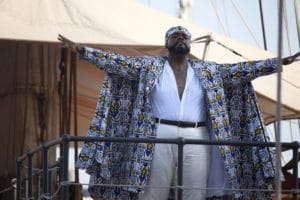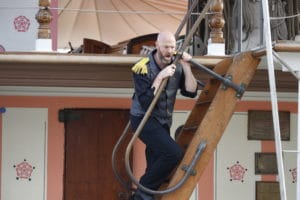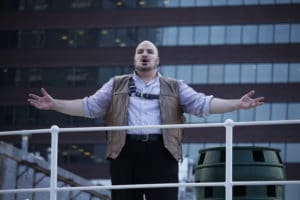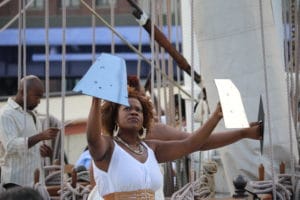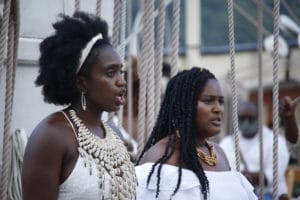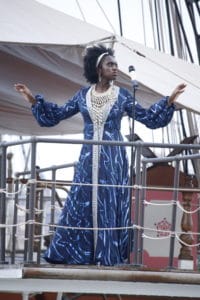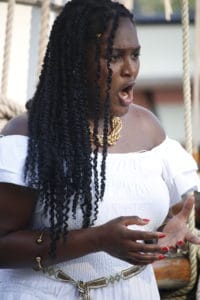 What Lies Beneath
What Lies Beneath
presented at
The Tall Ship Wavertree
South Street Seaport Museum
Pier 16, foot of Fulton St.
New York, New York, 10038
Combining song, story, history and movement as we returned to live performance, What Lies Beneath was a site-specific and immersive experience aboard the historical Wavertree, built in 1885, and used as a cargo ship before being acquired by the South Street Seaport Museum in 1968. This immersive musical experience invited small groups to travel around the ship’s main deck to hear and see vignettes intended to connect audiences to the complex and tragic stories surrounding American maritime history, both through the enslavement of African people and through novelist Herman Melville’s tragic heroes. From the enticements used to lure Africans into enslavement to Captain Ahab’s final moments of moral reckoning aboard the whaling ship Pequod in Moby Dick, What Lies Beneath was a series of six unique vignettes:
TRICKSTER’S ARIA
from Amistad composed by Anthony Davis to a libretto by Thulani Davis
AHAB
(Staged Premiere)
composed by Juliana Hall to a libretto by Caitlin Vincent
1619: A SONG CYCLE
(East Coast Premiere)
by Damien Geter
CLAGGART’S ARIA
from Billy Budd composed by Benjamin Britten to a libretto by E. M. Forster and Eric Crozier
SEA FEVER
composed by John Ireland to a poem by John Masefield
World Premiere arrangement by James Davis Jr.
MAURYA’S LAMENT
from Riders to the Sea composed by Ralph Vaughan Williams
based on the play of the same name by John Millington Synge























 The 1885 ship
The 1885 ship 


